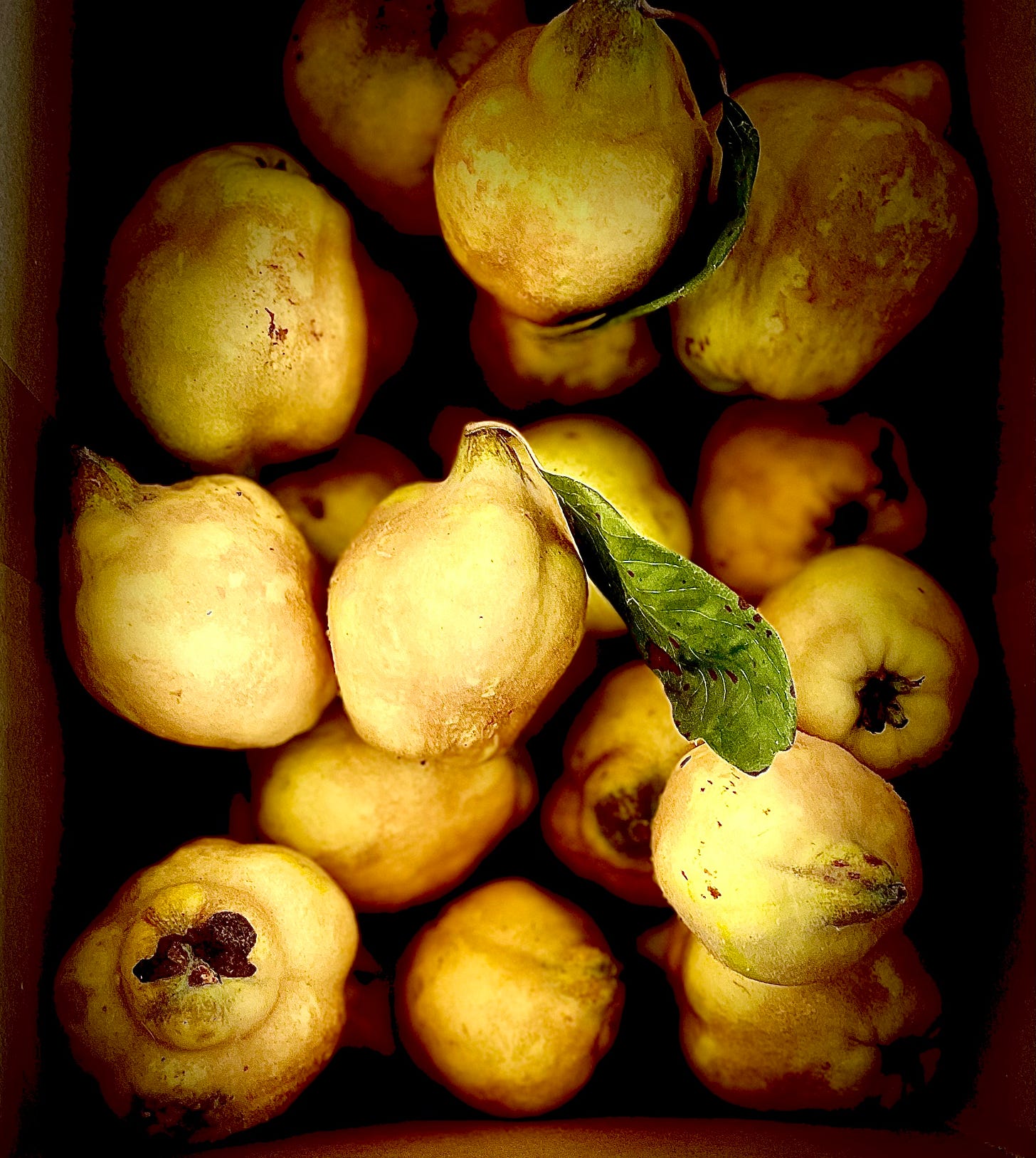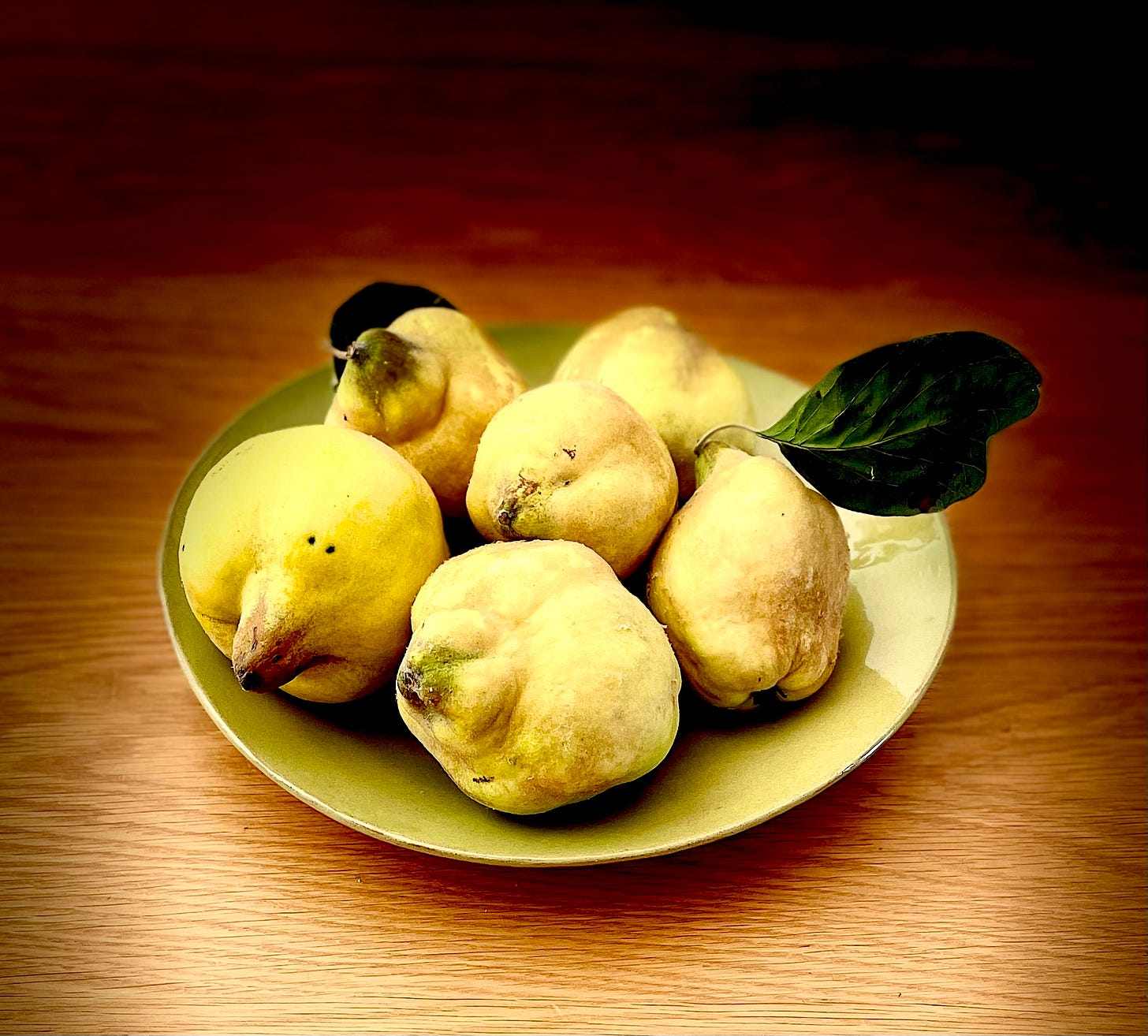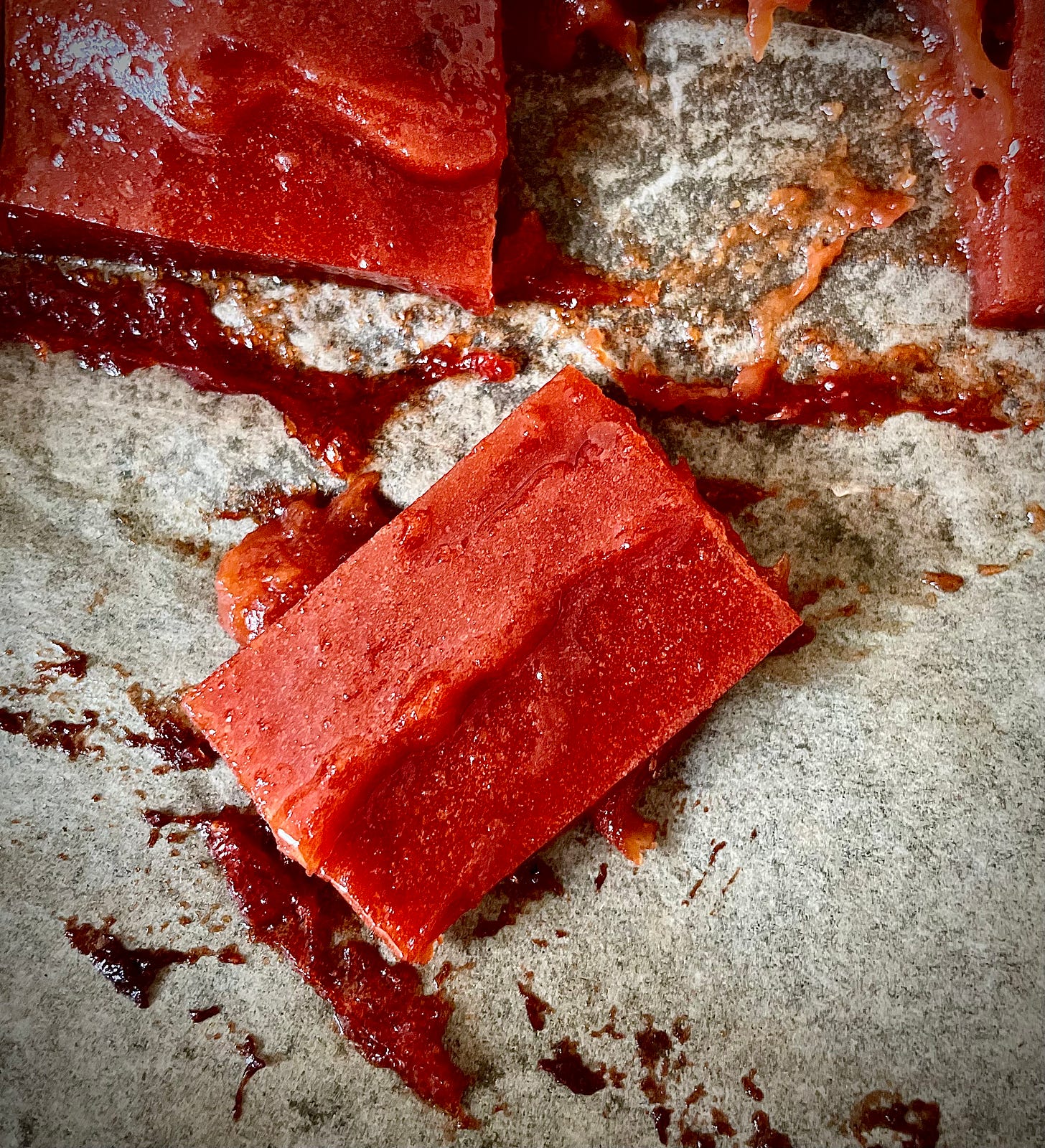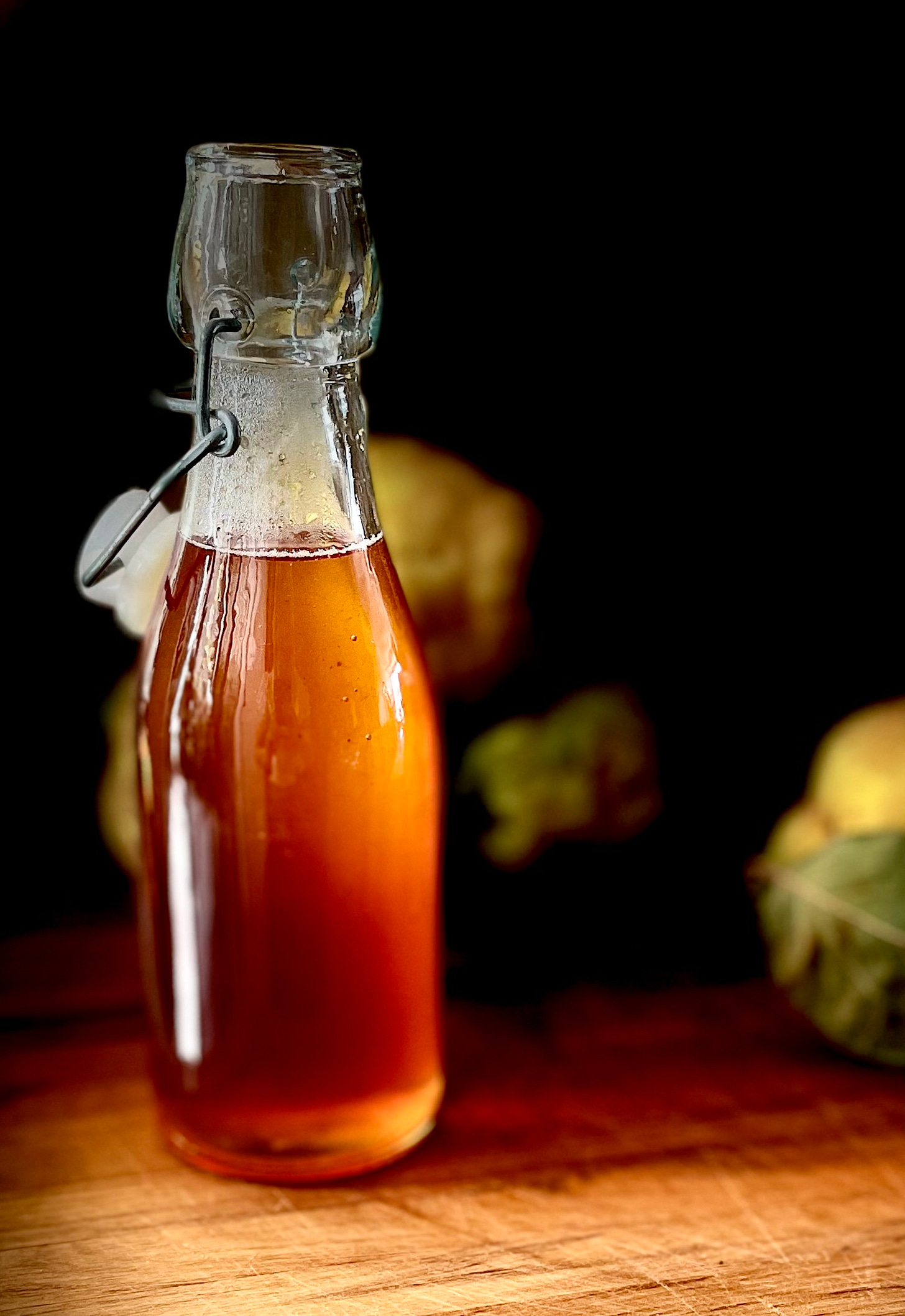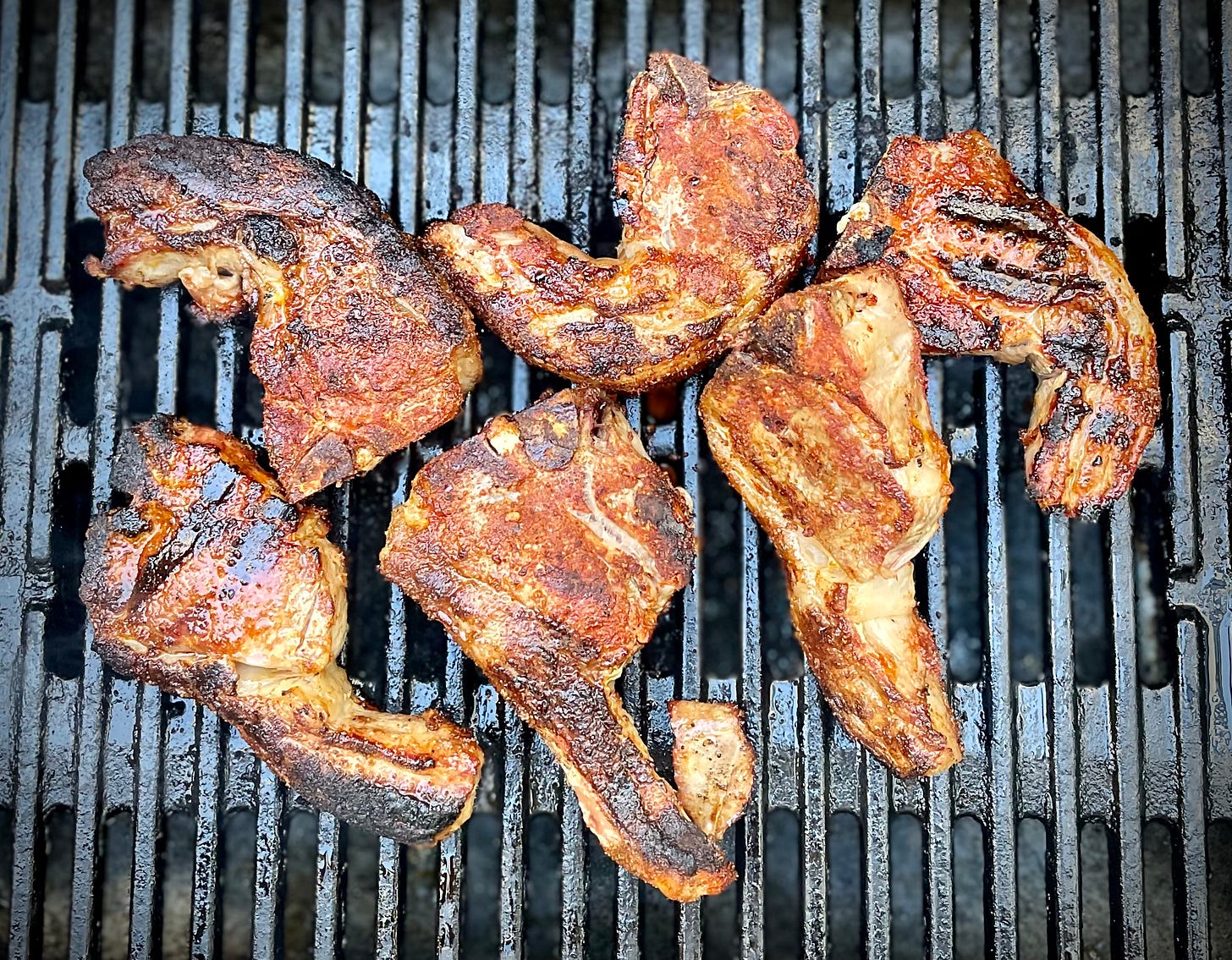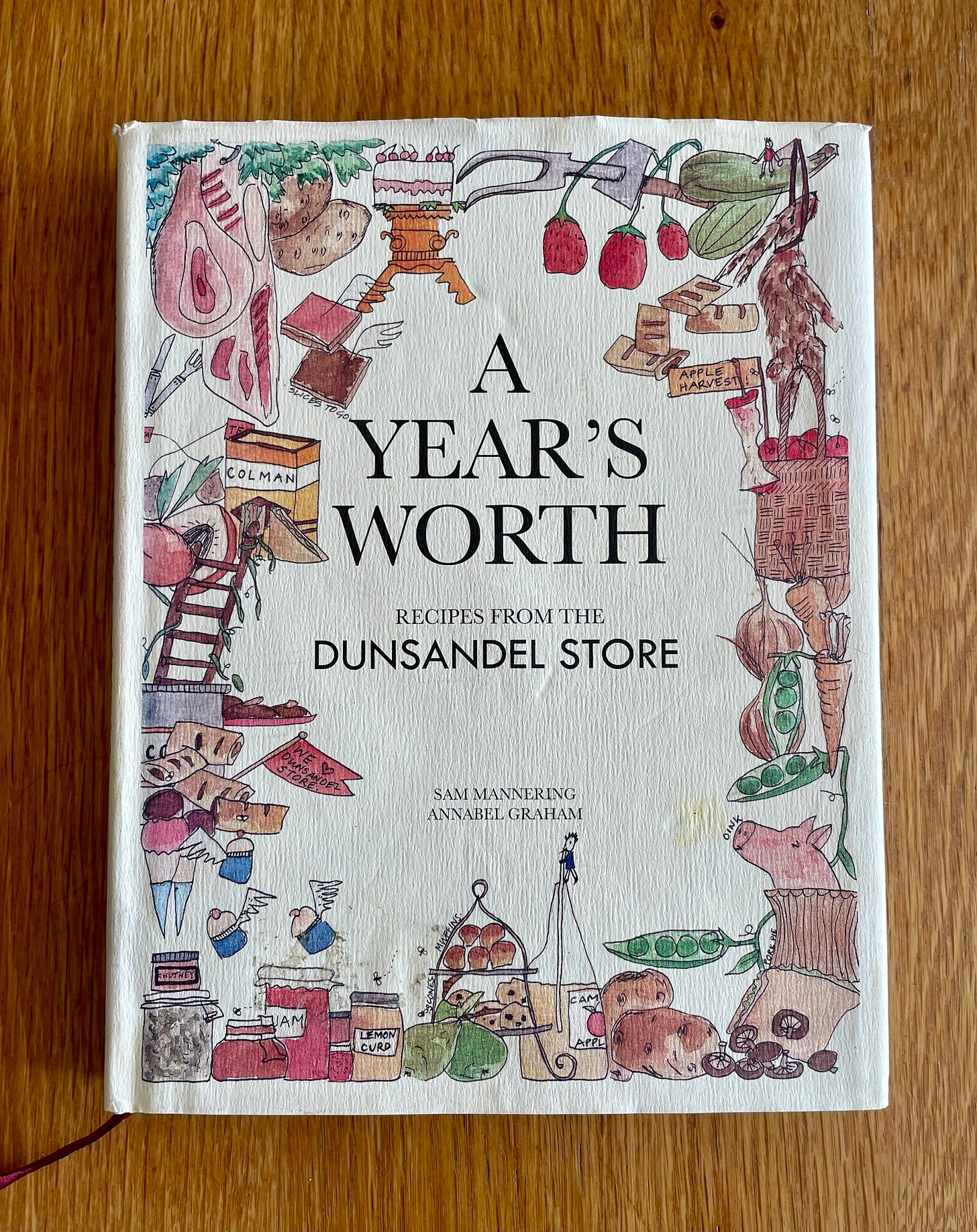Every day this week I’ve come home from work and felt deeply happy. It’s not just the normal reasons (hello beloved family, hello dog, hello slippers), but a rich, floral scent that hits as soon as I open the front door. Here’s what it’s coming from.
Last Sunday, when I was out sharing this cake with some of my oldest pals (who didn’t mind when I accidentally dropped it on the floor in my enthusiasm), my friend Charlotte dropped off this vast box of quinces. They’ve perfumed the house all week, but it’s been overlaid with a strong whiff of ‘what are you going to do with us?’.
Cooks have been wrestling with this for centuries, because quinces are as old as time. Apicus wrote about them in the fourth or fifth century; later, bible scholars speculated Eve’s downfall came from eating a quince, rather than an apple. When Joan of Arc arrived in Orleans, she was apparently gifted a kind of quince jam (which seems a bit paltry, even if quince preserves were highly valued in medieval times).
Quinces are old-fashioned. No one is going to make a viral quince-laced high protein Weetbix tiramisu (at least, I hope not) or recommend eating them raw. There are apparently exceptions, but in my experience quinces require long, slow cooking and lots of sugar. Try a slice of raw quince and the dry, slightly gritty flesh will suck all the moisture from your mouth. Try a piece of quince cooked in simmering water until soft and it almost tastes of nothing. Sugar brings back the elusive flavour; sweet apples and ripe pears, lemon and roses.
Quinces make me think of my big sister Marion, who I remember making rusty red membrillo (probably to an Elizabeth David recipe) when I was about seven or eight, and jars of translucent quince jelly. When I rang her for advice about dealing with the vast box of them, she told me that she’d been tackling some too. “Just do a little bit at a time,” she said. “That’s what I do, and no one complains, or if they do, I don’t listen.”
Quinces scented my first autumn in London after I read a newspaper column by
extolling their virtues. When I emailed Jill to ask where she’d bought them from, she replied instantly (which felt like getting a telegram from the queen), with details of a grocer in Holland Park. I lived in distinctly less salubrious Finsbury Park at the time, but was very cheered to see some soon afterwards at our neighbourhood ‘Local English Mediterranean Food Store’. I bought three golden-green globes and put them on the bench in our flat, where they worked better than any posh candle to cut the smell of diesel fumes and weed wafting up from the street below.While writing I’ve been making quince paste to an unfamiliar recipe, which I abandoned part-way through in favour of more reliable Elizabeth David. I got away with minimal burns and it seems to have set, which always feels like a minor miracle. I’ve emptied the dregs of a bottle of red wine into a syrup spiked with cinnamon and star anise, and poached some halved quinces in it until they’re the colour of my school uniform blazer. Jelly and chutney are next on the list. Just when I feel like the box might be emptying, Charlotte sends a text: ‘want some more quinces yet?’
Quince syrup
Quinces are covered in a slightly sticky down, a bit like an undusted shelf. This is easily wiped off, but the skins still need removing for most recipes. Instead of putting the peel and cores in the compost, turn them into quince syrup. This is more useful than you might think - in drinks (with soda, or with just about any gin-based cocktail) and in/with puddings (sloshed over ice cream, folded through yoghurt, poured over cake).
1 cup caster sugar
1 cup hot water
The skin and cores of 4-5 quinces (raw or cooked)
Put the sugar and water into a small pot and stir well. Add the quince bits. Cover and set over medium heat. Simmer gently for 35-45 minutes, until the syrup tastes like the essence of quince. Let cool, then strain through a fine sieve into a sterilised jar. Store in the fridge.
Good things
As for the mince…
In Lois Daish’s much-loved and eminently still useful 1993 book Dinner At Home, one chapter is titled ‘I wish there was another name for mince’. I concur. We eat a reasonable amount of mince, which I buy (along with other meat, such as these succulent lamb chops) from Homegrown Butchery, a farm-to-plate set-up in the Wairarapa that I first discovered while judging the Outstanding Food Producer Awards a few years ago. Great people, excellent products and fast, fabulous service.
Lovely buns
I have always been a bit snooty about food TV shows, but I’m extremely charmed by this season of the Great British Bake-Off. I think I can guess who the winner is (no spoilers, please, not knowing is delightful). Prue reminds me of Aotearoa’s own culinary treasure, Ruth Pretty, and I’m even finding Noel a treat to watch. Oh and yes, the baking!
A Year’s Worth
I’ve spent a restorative few hours this week going through my cookbook library for quince recipes. This lovely book, which I scored from a library book sale for $2 a few years ago, has lots of them, including an excellent quince chutney that I last made during lockdown in April 2020. A Year’s Worth: Recipes from the Dunsandel Store, sold out in weeks when it was first published in 2010. It’s a beautiful, hand-illustrated record of the goings-on at the Dunsandel Store, south of Christchurch, written with great wit by Annabel Graham and
. If you see it in an op shop, snap it up!Next time on Fancy Butter… useful tricks to have up your sleeve when you don’t know what to have for dinner.




